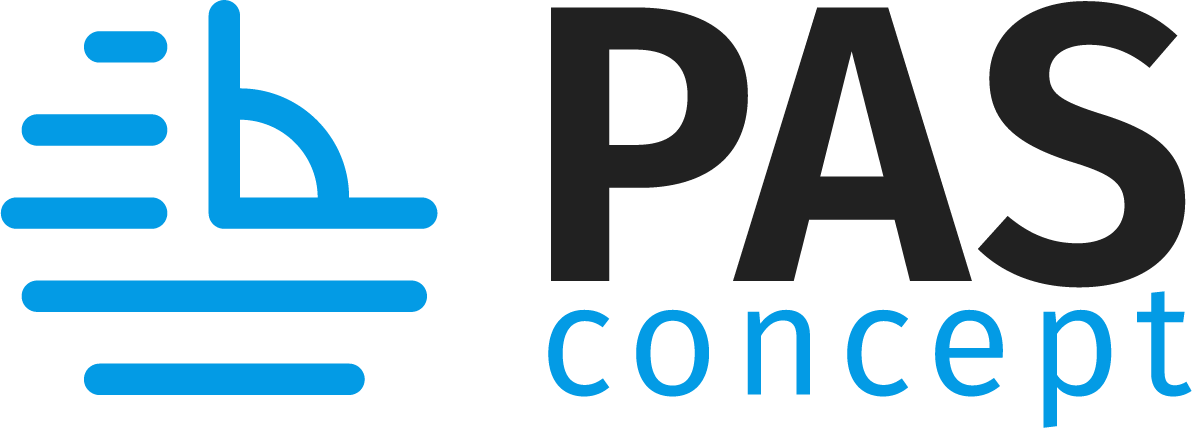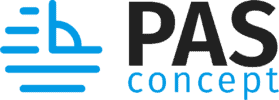| Client |
- Net Terms for each client can be entered in the client profile in the field “Payment Net Terms”
- Standard terms can be selected from the drop down or custom terms can be entered manually
- The Net Terms determine the default Due Date for all Invoices & Statements generated for this client
- Invoices
- Users can find the Due Date in the Invoices List
- If an invoice is past due, the number of days past due can be found in the Insights column
- While the Net Terms determine the default Due Date for an Invoice, it can be changed manually
- Statements
- Users can find the Due Date in the Statement List
- If an Statement is past due, the number of days past due can be found in the Insights column
- While the Net Terms determine the default Due Date for a Statement, it can be changed manually
|
| Jobs Map View |
- The Jobs Map View is accessible by clicking on the Map View Icon in the Job’s page
- Information:
- Job Number
- Job Completion Percentage
- Job Name
- Client
- Job Address
- Google Street View Image
- Actions:
- By clicking the Job Number, the user can access the Job Detail Page
- By clicking the Job Address, the user is directed to the google map’s page of the corresponding address
|
| Time Activities |
- Job Cards in the time activity view optimized for use and efficiency
- Jobs are segmented by Job Status and are paginated for easy access
- Job Cards in the time activity view optimized for use and efficiency
- Information
- Job Number
- Hours Completed/Hours Assigned
- Job Name
- Client
- Due Date, if applicable
- JDue Date will show red if Past Due
- Project Manager
- Actions
- Additional Job information can be accessed by clicking on the Job Number
- Quick Time entry form can be accessed by clicking on the Job Card
- The detailed Time Entry Form can be accessed by clicking the “Full View” button.
- This option can be used by clicking the buttons to the right of the Jobs page title
|
| Job |
- The Jobs Module can be seen in three different views
- List View – This is a standard list table
- Board View – This view lists projects by Status and shows Jobs as cards which can be moved from list to list
- This view has a unique filter, Max Number of Results, which allows adjust the maximum number of cards shown on the board
- Gantt View – This view shows the projects on a Gantt chart
- This view has a unique filter, Column Width, which allows the user to change with width of the Gantt Chart’s columns
- This option can be used by clicking the buttons to the right of the Jobs page title
|
| Job Board View |
- Jobs can be viewed in a Kanban Board Style allowing users to view Jobs as cards which can be moved from status to status
- Users can select the maximum number of Cards to be presented, this is set to 250 by default
- Job Cards present the following information and actions:
- Job Number, by clicking on this the user can navigate to the Job Detail page
- Job Name
- Client, by clicking this field, users can navigate to the Client Profile
- Employees, This field will show each employee related to a project. Project Managers are identified by being yellow. Non-managers are shown as teal
- The following actions can be taken by clicking their respective icon:
- Add Time Icon – By clicking on the Add Time Icon, represented by the presence of a clock, a user can add time directly to the job
- Add Employees – By clicking on the Add Employee Icon, represented by the presence of the plus sign (+), a user with the appropriate access permissions can add employees to the Job
|
| Job Scope Tab |
- The Job Scope tab contains the Phases and/or Tasks and detailed Scope of Work of a Job and can be located in the Job Detail View
- Job Table
- The Job Table shows the Job Number, Job Name, Assigned Hours, Executed hours, Planned Start Date, Planned End Date, Start Date, Estimated Due Date, Progress Percentage, and status
- By clicking on the Task Name the user can update the Start Date, the Due Date, and the Percent of Completion
- From this form the user can also apply Planned Dates to All Tasks and Phases
- Phase Table
- The Phase Table will appear only if the Job has Phases
- The Phase Table shows the Phase list for the Job containing the task Name, Assigned Hours, Executed hours, Planned Start Date, Planned End Date, Start Date, Estimated Due Date, Progress Percentage, and status
- By clicking on the Phase Name the user can update the Start Date, the Due Date, and the Percent of Completion
- From this form the user can also apply Planned Dates to All Task related to the Phase
- If all Tasks within a Phase are fall under the status Complete, the status of the Phase will change to Complete
- Task Table
- The Task Table shows the Task list for the Job containing the Task Name, Assigned Hours, Executed hours, Planned Start Date, Planned End Date, Start Date, Estimated Due Date, Progress Percentage, and status
- By clicking on the Task Name the user can update the Start Date, the Due Date, and the Percent of Completion
- Gantt View
- To view the Job’s Phases and Tasks in a Gantt Chart, click on the View Gantt button at the top right of the Job Scope Tab
- The three tiered levels of the Gantt are as follows: Job, Phases, Tasks. If a project does not contain Phases then the Gantt is two tiered, Job and Tasks.
- The following fields are reflected to the right of the Gantt Chart:
- Job/Phase/Task Name
- Planned Start Date
- Planned End Date
- Progress Percentage
- By hovering over an Item in the Gantt chart, a user can make the following Gantt Chart Actions:
- Change Completion Percentage: By pulling the items vertical marker, the user can increase or decrease the items percent of completion
- Open Form: By clicking on the item, the user will open the item’s Management Form
- To Exit the Gantt View and return to the List View, click on the yellow button labeled “View List” at the top right hand corner of the Scope Tab
|
| Changes in Add New Time |
- When Adding Time to a Job, the user will be able to update the state of completion of the selected Task
- If a Task’s Percent of Completion is updated, the new percent will be reflected in the Job’s Scope Tab
|
| Activities |
- Multiple Activities can be added using the Add Sequence button
- The Add Activity Sequence button can be found on Clients, Opportunity, Proposals, and Jobs
- Users can create Activity Sequence Template(s)
|
| Opportunities |
- Opportunities can be viewed in a Kanban Board Style allowing users to view Opportunities as cards which can be moved from status to status.
- Time can be entered directly to an opportunity by visiting the Times Tab
- Opportunities can be linked to existing proposals
- The status of the Opportunity will change as per the status of the proposal (i.e Proposal and Awarded)
- Additional Field: Bid Meeting Date. This optional field should be used for the date of your Pre-bid Meeting, (If Applicable)
- Additional Statuses:
- Not in Progress for when you are not actively working on an Opportunity
- Not Interested, if you are not interested in pursuing an opportunity
- Submitted for when you have submitted your proposal
- Disqualified, should it be an opportunity you cannot pursue
- Not Awarded, for an opportunity you are ultimately not awarded
- Opportunities List interface optimized to allow for more effective management of the Opportunities
|
| Proposals |
- Time can be entered directly to a Proposal by visiting the Times Tab
|
| User Profile |
- Users can configure which statuses appear by default in both the Proposals and Opportunities List
- Users can choose which Opportunities view they wish to have as default; List or Board View
|

